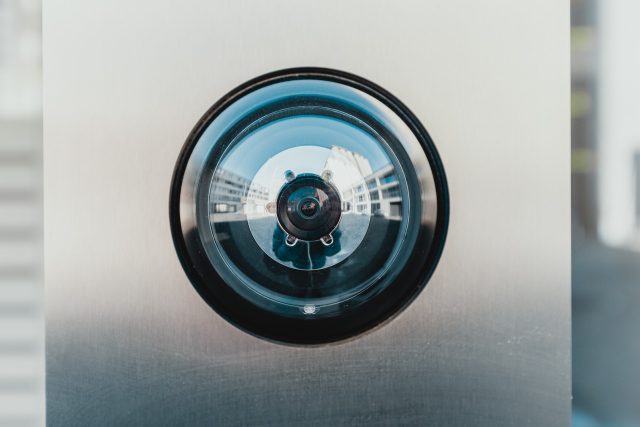Creating a safe and secure home for your family is an important responsibility. A secure home environment allows families to build strong relationships, feel safe and comfortable, and create lasting memories. In today’s world, ensuring your home is as secure as possible can be difficult due to the ever-rising number of threats inside and outside the home.
Safety and Security Matters
Regarding safety and security matters, there are many factors to consider to create a safe and secure home for your family. Here are some additional considerations to keep in mind:
- Regular maintenance and repairs: Keeping your home in good repair can prevent accidents and ensure that it remains a safe and secure environment for your family. This includes regularly checking electrical systems, plumbing, and appliances to ensure they function properly.
- Emergency preparedness: Besides having smoke detectors and carbon monoxide detectors, it’s important to have a plan in place in an emergency. This can include having a designated meeting place outside the home in case of a fire, keeping emergency supplies such as a first aid kit and non-perishable food on hand, and having a list of emergency contacts readily available.
- Personal safety: It’s also important to ensure personal safety within the home. This can include locking doors and windows, installing motion-activated outdoor lighting, and being cautious about who you allow into your home.
- Cybersecurity: As more aspects of our lives move online, it’s also important to prioritize cybersecurity in the home. This can include using strong passwords, avoiding public Wi-Fi networks, and being cautious about opening suspicious emails or links.
By taking these safety and security matters seriously, you can create a safe and secure home environment for your family, providing peace of mind and ensuring their well-being. Benefits of a Safe Home: Peace of Mind
Protecting Valuables: Safeguarding Belongings
In addition to personal safety and emergency preparedness, safeguarding your belongings is another important aspect of home safety and security. Here are some tips for protecting your valuables:
- Install a home security system: A home security system can provide a high level of protection for your belongings, including video surveillance, motion sensors, and alarms that can alert authorities during a break-in.
- Use a safe: Keep valuable items such as jewelry, cash, and essential documents in a secure safe bolted to the floor or wall. This can provide an added layer of protection against theft.
- Make your home less attractive to burglars: You can reduce the risk of a break-in. This can include keeping windows and doors locked, using motion-activated outdoor lighting, and keeping valuables out of sight.
- Consider insurance: Homeowner’s insurance can provide coverage in the event of a theft or damage to your belongings. Make sure to review your policy and ensure that you have adequate coverage for your valuables.
By safeguarding your belongings, you can help protect your financial investment and ensure that your family’s most treasured possessions are kept safe and secure.
Safety Technology: Advancements in Home Security
Advancements in technology have led to a wide range of innovative home security options. Here are some examples of the latest safety technology that can help you create a safe and secure home:
- Smart home security systems: These systems use wireless technology to connect security devices and sensors to a central hub, which a smartphone app can control. They can include features like video doorbells, indoor and outdoor cameras, and smart locks, which allow you to monitor your home and control access remotely.
- Home automation: Automated systems can control lighting, heating, and other systems in your home, making it appear occupied even when you’re away. This can provide an added layer of protection against burglaries.
- Facial recognition technology: Some security systems now use facial recognition technology to identify family members and trusted visitors, allowing for quick and easy access to the home while keeping unwanted guests out.
- Artificial intelligence: Advanced home security systems use artificial intelligence to learn the habits and routines of a household, which can help identify unusual activity and alert homeowners to potential threats.
- Drone surveillance: Some security systems use drones to provide aerial surveillance of a property, which can be particularly useful in large estates or remote areas.
These advancements in home security technology can provide enhanced protection for your home and family.
Preventing Intruders: Deterring Unwanted Guests
Preventing intruders is an important aspect of home safety and security. Unwanted guests can pose a significant threat to your family’s safety and cause property damage or loss of valuables. To deter intruders, there are several strategies you can implement.
One of the most effective ways to prevent intruders is to secure all entry points to your home. This includes doors, windows, and any other access points that could be used to gain entry. Ensure all doors have sturdy deadbolts and use security bars or grates on basement and ground-level windows. It’s also a good idea to keep hedges and shrubs trimmed around the exterior of your home to remove potential hiding spots for intruders.
Lighting is another important factor in deterring intruders. Ensure your home’s exterior is well-lit, especially around entry points. Motion-activated lights can be particularly effective in deterring unwanted guests, as they can startle intruders and draw attention to their presence.
A home security system can also be an effective way to deter intruders. Not only can the system alert authorities in the event of a break-in, but the presence of visible security cameras and alarm decals can be enough to deter intruders from attempting to break in.
Finally, it’s important to be mindful of your own actions when it comes to preventing intruders. Avoid leaving spare keys in obvious places, such as under a doormat or flowerpot, and be cautious about who you give access to your home. Simple precautions like these can go a long way in deterring unwanted guests and keeping your home safe and secure.
Home Fire Protection: Minimizing Damage

Home fires can be devastating, so protecting your home and minimizing the risk of damage is essential. Here are some tips to help you protect your home from fires and reduce the damage if a fire does occur.
First, make sure that you have working smoke detectors throughout your home. Smoke detectors should be installed on every level of your home, including the basement and each bedroom. Test your smoke detectors regularly to ensure they are working correctly, and replace the batteries at least once a year.
Having a fire escape plan is also important in case of a fire. Make sure that everyone in your home knows the escape plan, including the fastest route out of each room, and practice it regularly so that everyone knows what to do in an emergency.
Another critical step in fire protection is to be mindful of potential fire hazards in your home. Avoid overloading electrical outlets and extension cords; never leave candles or other open flames unattended. Ensure that combustible materials, such as clothing or paper, are kept away from heat sources.
Finally, consider installing a fire suppression system in your home, such as sprinklers or fire extinguishers. These systems can help to minimize the damage caused by fire and may even extinguish the fire before it has a chance to spread.
By taking these steps to protect your home from fires, you can help to keep your family and your belongings safe in the event of a fire.
Emergency Preparedness: Be Ready for Anything
An emergency preparedness plan can help you respond quickly and efficiently during a crisis. Start by creating an emergency supply kit with food, water, first aid supplies, flashlights, batteries, and other essentials that you may need should an emergency arise. Additionally, it is important to identify potential risks specific to your areas, such as hurricanes or earthquakes. Research the proper steps that should be taken during these events so that you can prepare beforehand.
It is also helpful to create evacuation plans for different types of emergencies and discuss them with your family so everyone knows where they should go if they are ever faced with danger. Finally, ensure all family members have access to the contact information of local law enforcement agencies and close friends or relatives who can assist if needed. By following these simple steps, you can ensure that your home will remain safe and secure no matter what happens.
Securing Your Family’s Future
Creating a safe and secure home for your family is essential to their future. It is important to identify potential risks in your home such as fire, theft, and other perils. Consider investing in security systems and ensure you have reliable locks on all doors and windows. Regularly check the condition of safety equipment like smoke detectors and carbon monoxide alarms. Additionally, review your insurance policy to ensure it covers all possible dangers for which you could be liable.
It is also beneficial to discuss safety with your family members so that everyone knows what steps to take should an emergency arise. Developing an emergency plan can help ensure that everyone remains calm if danger strikes. Additionally, discuss any potential hazards with children so they are aware of the risks associated with certain activities or areas of the home like the kitchen or garage.
Ensuring a safe environment for your family is essential for physical protection and emotional well-being. Families who feel secure in their homes will have stronger relationships between members as well as confidence in their own abilities when facing life’s challenges together.






























